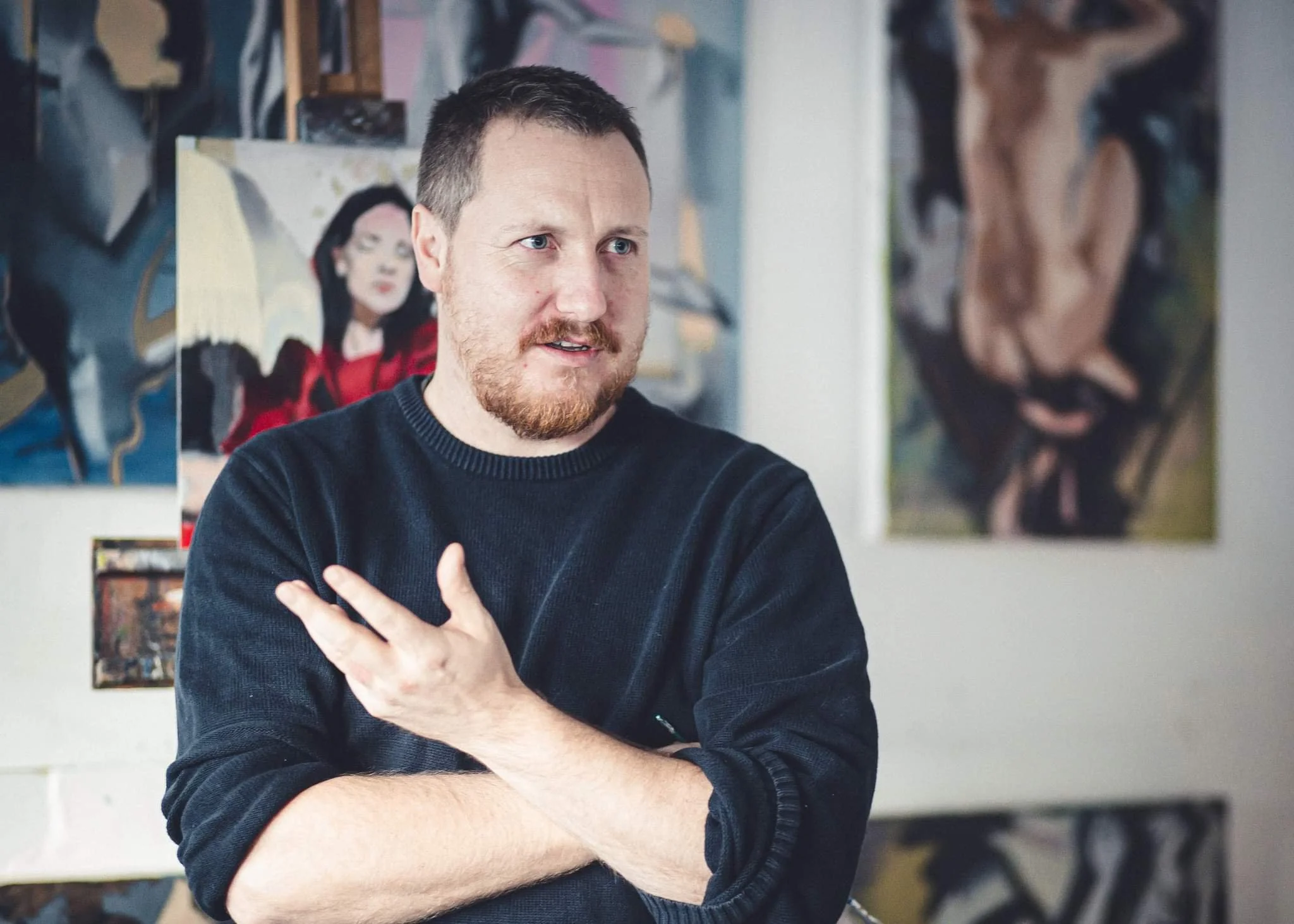Rufus Filmer is an artist and teacher. His work depicts figures, often human, painted in imagined or contrived environments. Filmer is inspired by a painting’s ability to present a fleeting moment or illusion of flux, through a medium charactistic of contemplation and gradual progress.
Filmer gained a First-Class Bachelors degree in Fine Art at UCA where he specialised in painting. Alongside his studio practise he teaches Art in an independent school. The original pieces he produces are sold internationally and he also accepts portrait commissions.
Statement
The ambiguous nature of the narratives within the paintings of Rufus Filmer is conspicuous. The paintings allude to a story, parable or historical event but offer no tangible clue to complete the decipher. The human figures acts as reoccurring theatrical motifs within the paintings; as protagonist or proxies to act out the performances of each piece.
The compositions themselves are fabricated from varying photographic sources: picture books, news stills, old nudist magazines, frozen television dramas and movie stills. The paintings re-assemble these fragments of the banal, incidental, contrived and sublime from recent past cultural history, into newly orchestrated performances. The viewer is invited to retrospectively hang their own sense of meaning onto them, in the same way one interprets an event later as it recedes to the vagaries of memory.
Through the manner of their construction, Filmer’s paintings explore the tension between abstraction and representation. In places drawing the viewer to recognise a tangible world within the painting, and at others exposing the constructed nature of the image, fraying the reality at the edges. The figures themselves act as props for the higher purpose of the composition; although posed “naturalistically” they exist theatrically as actors on the stage of the canvas.
The paintings touch on references from Art History of figurative painting, from religious paintings of the renaissance to the more knowing post- modern paintings of the late twentieth to early twenty-first century. Gerhard Richter, Francis Bacon, Peter Doig, Neo Rauch, Kaye Donachie, Justin Mortimer and Edward Povey are sighted influences.

